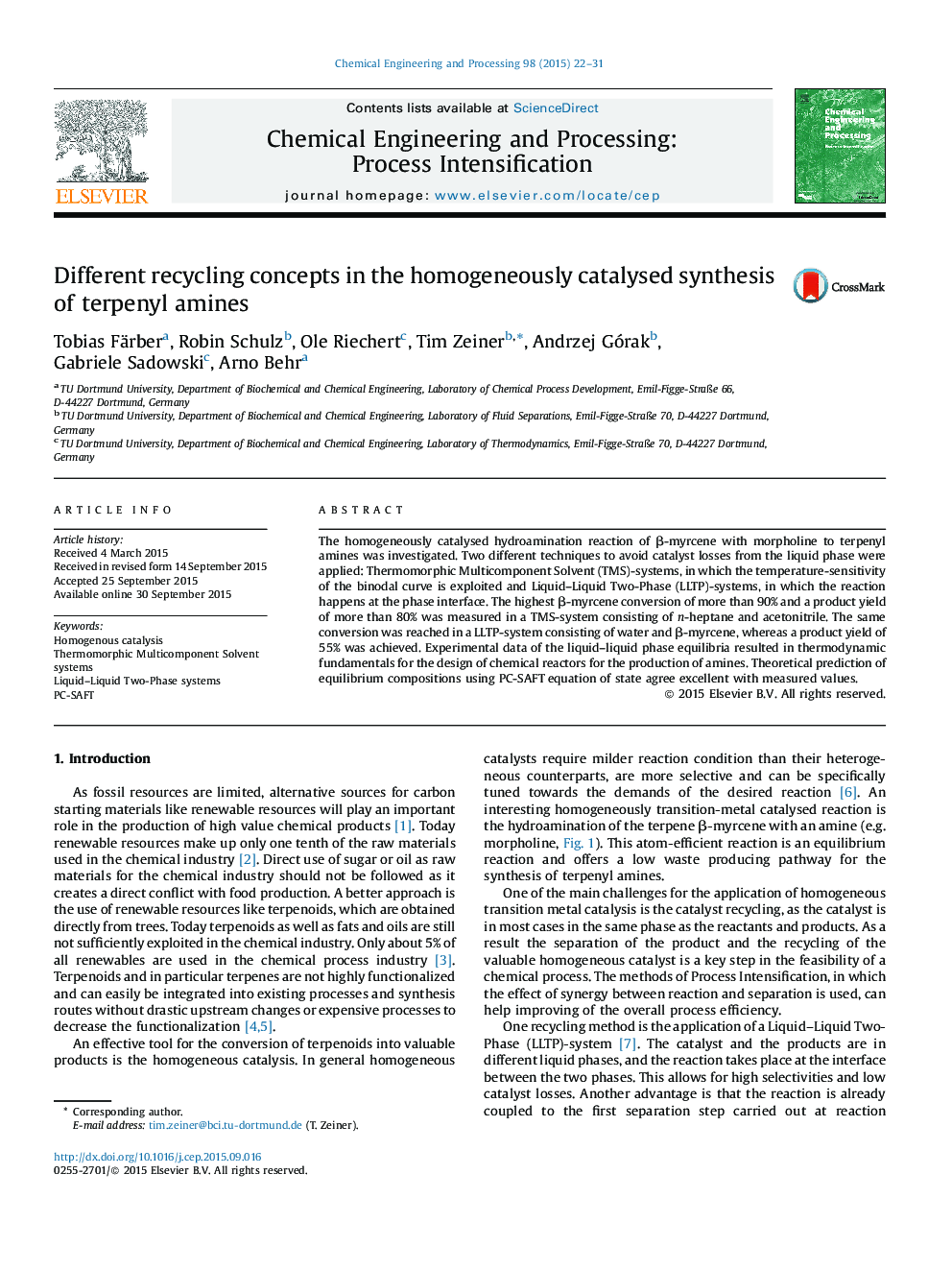| Article ID | Journal | Published Year | Pages | File Type |
|---|---|---|---|---|
| 687092 | Chemical Engineering and Processing: Process Intensification | 2015 | 10 Pages |
•Comparison: Liquid–Liquid Two Phase systems vs. Thermomorphic Solvent systems.•Both systems deliver comparable conversion and product yield.•Thermodynamic modelling of both systems by PC-SAFT.
The homogeneously catalysed hydroamination reaction of β-myrcene with morpholine to terpenyl amines was investigated. Two different techniques to avoid catalyst losses from the liquid phase were applied: Thermomorphic Multicomponent Solvent (TMS)-systems, in which the temperature-sensitivity of the binodal curve is exploited and Liquid–Liquid Two-Phase (LLTP)-systems, in which the reaction happens at the phase interface. The highest β-myrcene conversion of more than 90% and a product yield of more than 80% was measured in a TMS-system consisting of n-heptane and acetonitrile. The same conversion was reached in a LLTP-system consisting of water and β-myrcene, whereas a product yield of 55% was achieved. Experimental data of the liquid–liquid phase equilibria resulted in thermodynamic fundamentals for the design of chemical reactors for the production of amines. Theoretical prediction of equilibrium compositions using PC-SAFT equation of state agree excellent with measured values.
